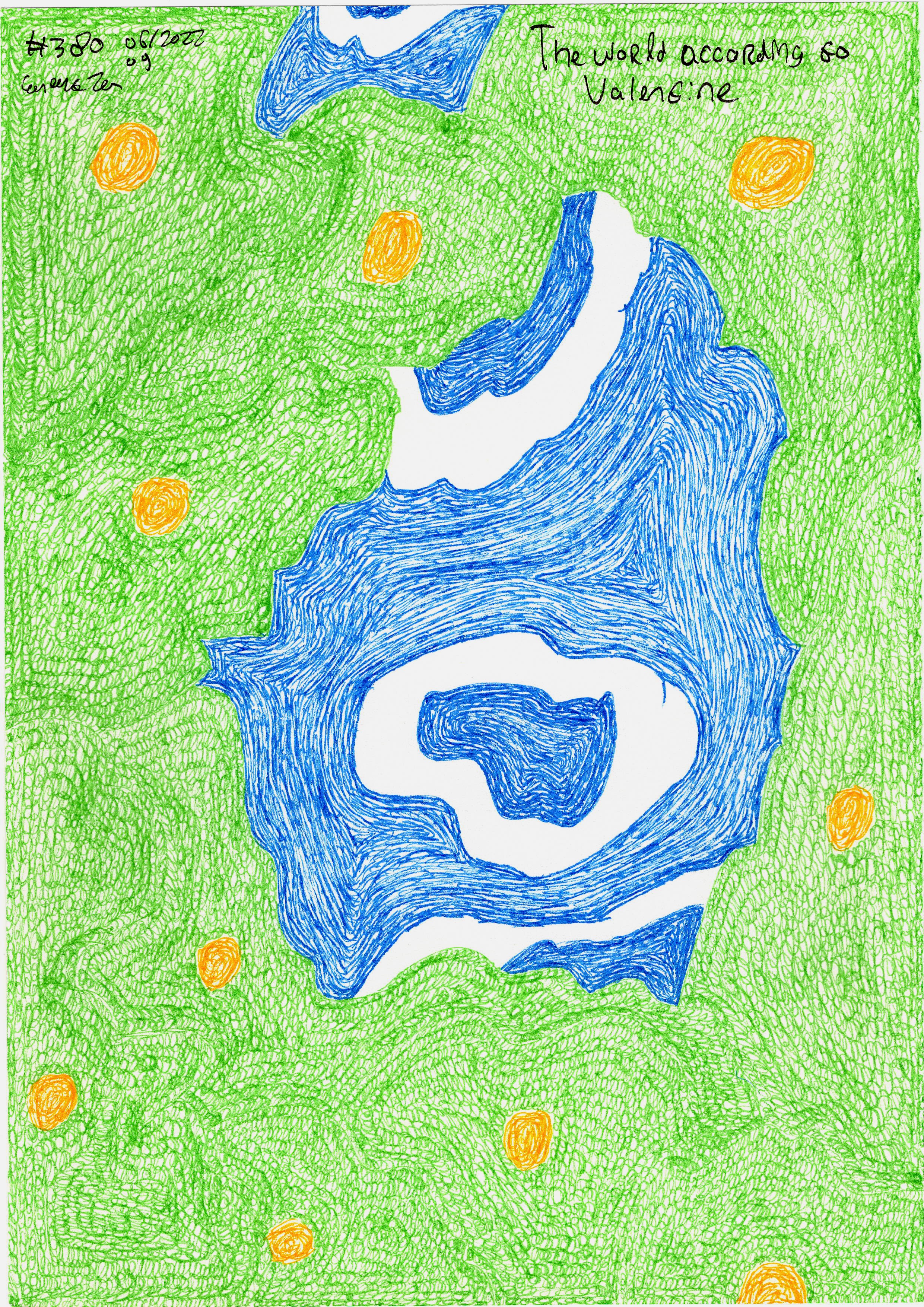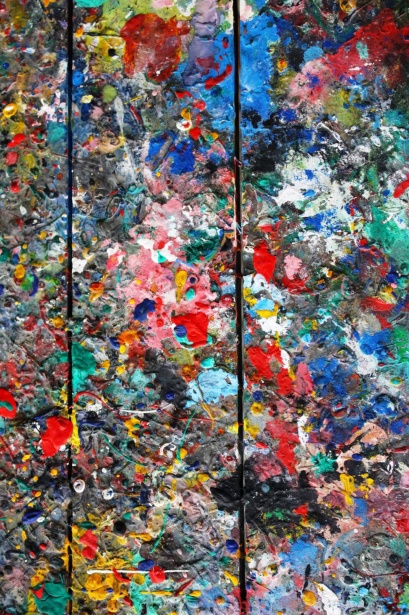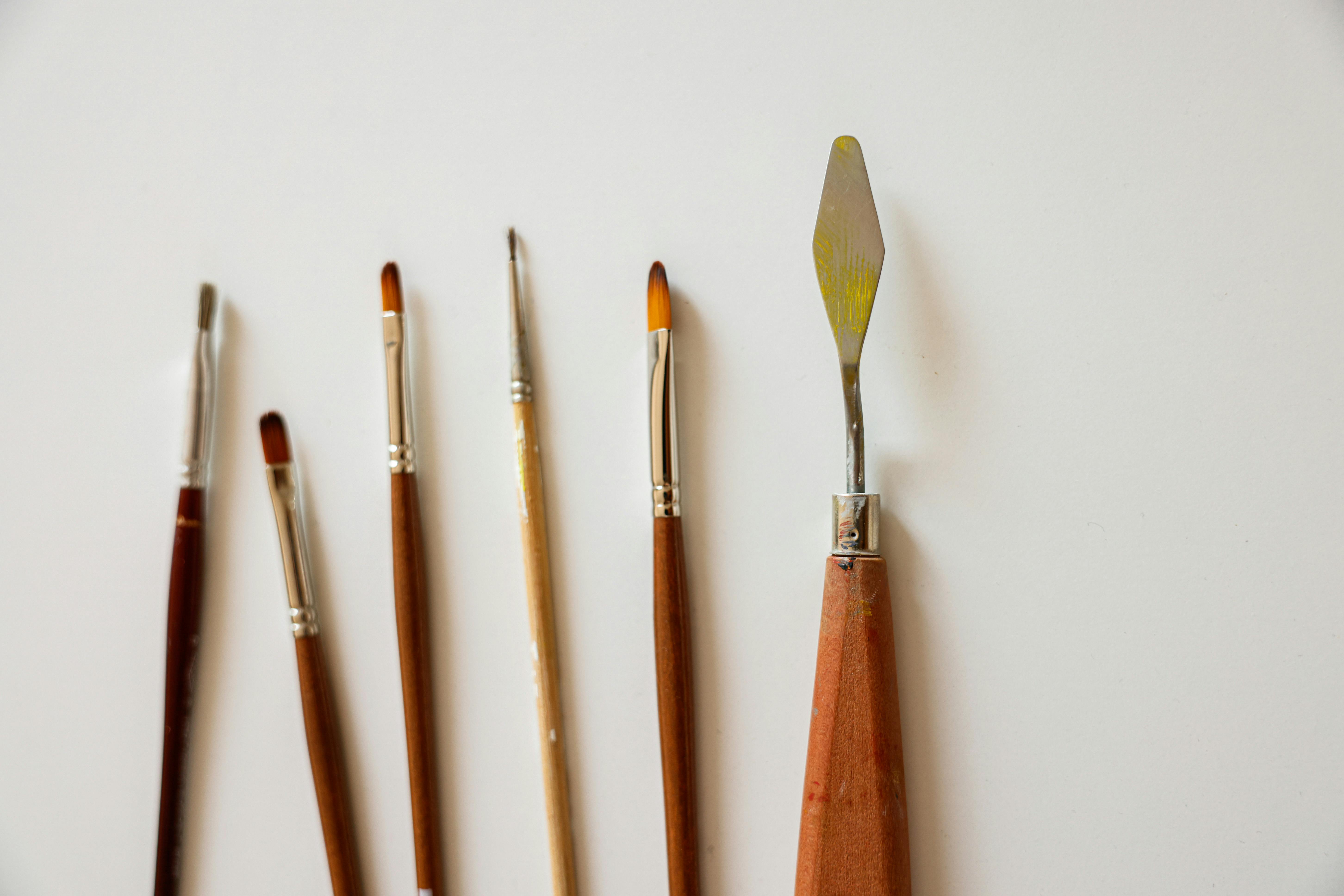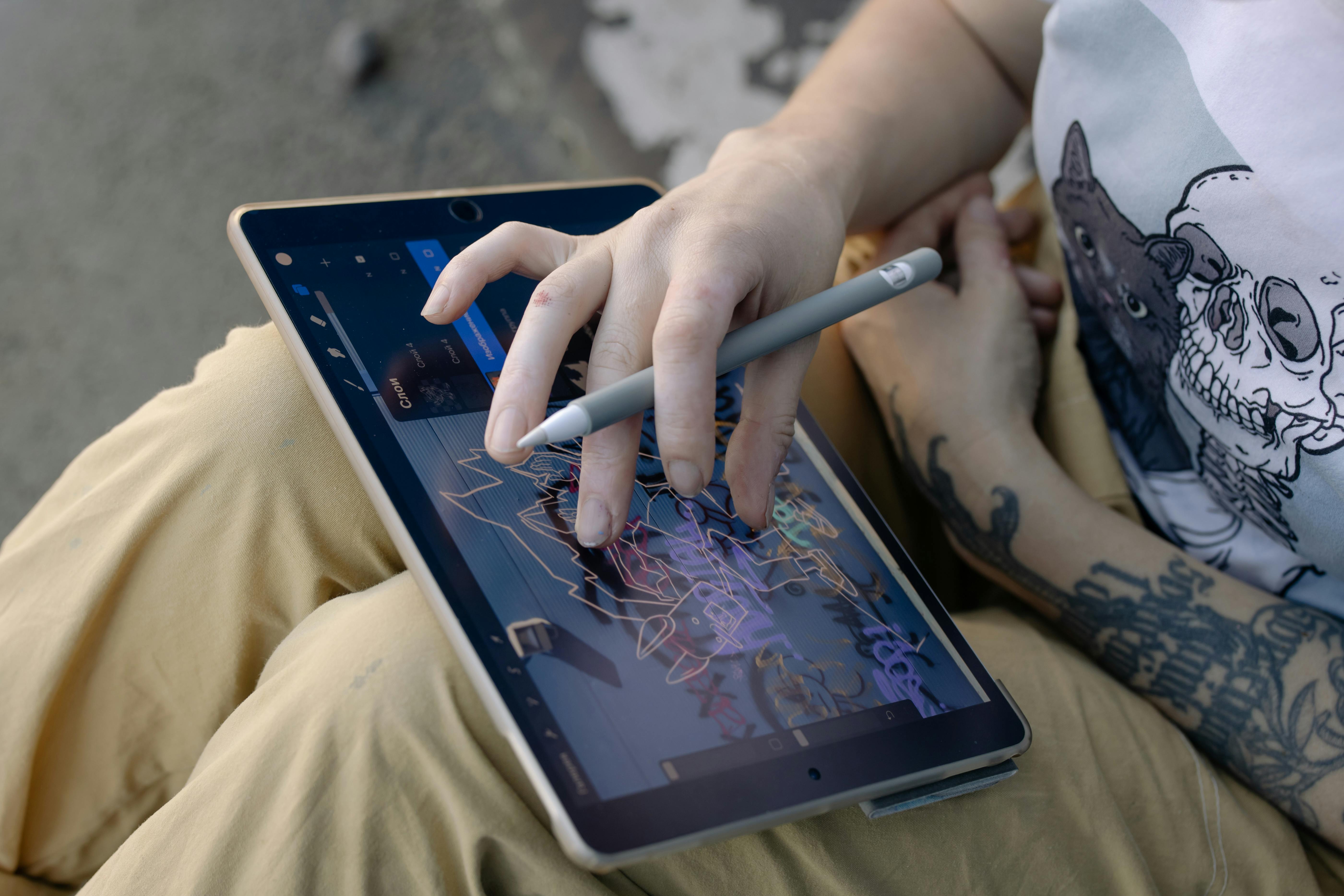Start a Sketchbook Habit: Unleash Creative Potential & Master Visual Thinking
Terrified of the blank page? This guide helps artists overcome fear, build a consistent sketchbook habit, master visual thinking, and develop a unique artistic voice. Practical tips and deep insights included!
# How to Start a Sketchbook Habit for Artists: Your Creative Journey's Best Friend!{/* Your Creative Journey's Best Friend */}
Look, I get it. The blank page can be terrifying. It stares back at you, a silent judge, daring you to mess it up. For years, my sketchbooks were either pristine monuments to procrastination or graveyards of half-hearted attempts, slammed shut in frustration. I always admired artists who carried their sketchbooks everywhere, pulling them out to scribble and dream without a second thought. "How do they do it?" I wondered, feeling like a creative impostor. Honestly, my internal critic was a real dictator, whispering insidious doubts about my artistic worth.
But then something clicked. I realized I was approaching it all wrong. I thought a sketchbook was where finished ideas were born, perfectly formed and ready for the canvas. The truth was simpler, messier, and infinitely more rewarding. Your sketchbook isn't a gallery; it's a playground, a diary, a whispered conversation with yourself where you explore nascent ideas, question assumptions, and, most importantly, find a safe space for imperfection. This isn't just for 'naturally talented' artists; if you've ever struggled to kickstart or maintain a regular creative practice, this little book, my friend, is about to become your secret weapon. The real secret isn't some mystical talent; it's a simple, accessible habit that anyone can cultivate. By the end of this guide, you'll have the tools and mindset to transform your blank pages into a vibrant creative playground and watch your artistic confidence soar. It's time to quiet that inner critic and just *begin*. And the best part? It's far easier than you think, and I'll show you exactly how to do it, step-by-step.
---
## More Than Just Pretty Pictures: What a Sketchbook Really Is
Think of your sketchbook not as a portfolio, but as a **laboratory**. It's a place where you can mess up without consequence, where ideas can be ugly before they're beautiful, and where you can chase a fleeting thought down a rabbit hole just to see what's there. It’s where your brain and hand can speak freely, without the pressure of an audience – crucial for unfiltered idea generation, where the weirdest thought might spark genius.
More profoundly, it's a tool for **visual thinking** – a distinct way of processing information, problem-solving, and generating ideas through images and forms, rather than just words or logic. For instance, if I'm trying to figure out how to arrange furniture in a room, my verbal brain might list dimensions, but my visual brain in a sketchbook would quickly map out quick box shapes for furniture, arrows for traffic flow, and dotted lines for potential pathways, often discovering a better solution through immediate visual feedback. Or, if I'm designing a fantastical creature for a story, I might sketch dozens of iterations, focusing on posture, scale, and feature relationships until the form feels right. Let's take that a step further: imagine grappling with an abstract concept, like "the feeling of transience." Verbally, you might list words like "fleeting," "impermanence," "change." In a sketchbook, you could explore shifting forms, overlapping transparencies, dissolving lines, or a series of marks that gradually transform, allowing visual connections to emerge that words alone couldn't capture. For my own [abstract art](/finder/page/how-to-abstract-art) practice, my sketchbook is where I first visualize how different [color choices](/finder/page/how-artists-use-color) might interact to evoke a mood, or how a specific texture could be represented visually, long before I commit to a canvas. It's truly a unique way to understand and interpret the world.
I've learned that a sketchbook thrives on spontaneity and freedom. It’s about logging visual thoughts, experimenting with concepts, and embracing the happy accidents that often lead to breakthroughs. Honestly, some of my best ideas for larger [abstract art](/finder/page/how-to-abstract-art) pieces, where shapes and colors speak louder than strict realism, have started as a tiny, barely legible scribble in the corner of a page. I remember one time, a coffee stain bloomed on a page, spreading like an inkblot test. Instead of trashing it, I leaned in, seeing new possibilities in its organic, uncontrolled edges. That accidental shape actually became the genesis for a whole new series of paintings exploring natural forms. It's truly about giving yourself permission to explore, to fail, and to find the inherent beauty in the process itself. If you're anything like me, you'll find immense liberation in [embracing accidents and evolution in your art](/finder/page/the-power-of-imperfection-embracing-accidents-and-evolution-in-my-abstract-art).

Unknown, Unknown, Unknown, Unknown
Even historical masters like Leonardo da Vinci filled countless notebooks with sketches, observations, and inventions, proving the sketchbook's enduring power as a thinking tool. But it's not just Renaissance geniuses; artists like Egon Schiele meticulously documented their raw emotions and figures in their sketchbooks, and contemporary artists like Lynda Barry use theirs as a vital tool for memory, storytelling, and daily observation, pushing the boundaries of what a sketchbook can be. And today, countless contemporary artists, especially those working in abstract expression, still use their sketchbooks as the raw, unedited genesis for their polished, public-facing work, using them to map out conceptual ideas and emotional landscapes. These are the places where foundational ideas for later [abstract art movements](/finder/page/the-ultimate-guide-to-abstract-art-movements-from-early-pioneers-to-contemporary-trends) often begin, in messy, unpretentious lines.

[https://www.publicdomainpictures.net/pictures/250000/nahled/messy-colorful-artists-palette.jpg](https://www.publicdomainpictures.net/pictures/250000/nahled/messy-colorful-artists-palette.jpg), [https://creativecommons.org/publicdomain/zero/1.0/](https://creativecommons.org/publicdomain/zero/1.0/)
This idea of a sketchbook as a private, messy laboratory is liberating, isn't it? Beyond enhancing your observational skills and aiding memory retention, it can even be a profound form of **active meditation**, drawing you into a mindful state. It fosters **cognitive flexibility**, encouraging new ways of seeing and solving problems, and reduces the anxiety associated with producing 'perfect' art. The physical act of drawing also engages fine motor skills, strengthening the brain-hand connection that's so vital for artists. But before we dive deeper into the how-to, let's confront the dragon guarding the gate: the fear that often keeps us from even opening those pages.
---
## The Fear Factor: Why We Resist (and How to Beat It)
The biggest hurdle, I've found, isn't lack of time or skill; it's fear. The fear of wasting pages, of not being "good enough," of failing to produce something profound every single time you open it. I know that feeling all too well. I remember *that* sketchbook. The one that cost more than my weekly groceries, sitting there, judging me with its blindingly white pages, convinced *this* was the one where I'd finally create masterpieces. It sat on my shelf for months, unopened, a constant reminder of my supposed inadequacy. Those pristine white pages of a brand-new sketchbook can be intimidating, almost sacred. We don't want to desecrate them with a clumsy line or a botched drawing. It's often fueled by perfectionism, the looming shadow of imposter syndrome, and the subtle societal pressure on artists to always present a polished, "finished" product. We forget that the journey is as vital as the destination.
But here’s the thing about fear: it paralyses. So, how do we push past this creative paralysis and finally open those pages? Fear tells you to wait until you're inspired, until you have the perfect idea, until you have hours of uninterrupted time. And guess what? Those "perfect" moments rarely arrive. My advice? Don't wait. Make the first mark. And then another. And another. The goal isn't perfection; it's presence. It's simply showing up. What's one fear you can challenge in your sketchbook this week? Perhaps draw something 'ugly' on purpose, just to prove you can. I remember deliberately sketching a lopsided, grumpy-looking teapot for a week straight, just to prove to myself that a drawing didn't have to be 'good' to be valuable. It was surprisingly liberating.

[https://freerangestock.com/photos/177284/artists-workspace-filled-with-paint-brushes-and-supplies.html](https://freerangestock.com/photos/177284/artists-workspace-filled-with-paint-brushes-and-supplies.html), [this-link-is-broken-and-should-be-replaced/old:https://creativecommons.org/publicdomain/cc0/](https://creativecommons.org/publicdomain/cc0/)
---
## Getting Started: The Nitty-Gritty of Building the Habit
Alright, let's get practical. How do we actually turn this "sketchbook as a sacred scroll" mindset into "sketchbook as a daily creative companion"? The key is to make it effortless.
### Choosing Your Companion: The Right Sketchbook
Honestly, the "right" sketchbook is the one you'll actually use. Don't overthink it. But here are a few things to consider that might help you find *your* perfect match, or at least a good starting point.
* **Size:** A smaller one (A5 or A6) is less intimidating and easier to carry. A large one can feel like a daunting empty canvas. Starting small removes a significant mental barrier.
* **Paper Type:** If you're just sketching with pencil or pen, basic cartridge paper is fine. For those planning to [explore mixed media](/finder/page/my-journey-with-mixed-media:-blending-materials-for-abstract-expression), combining different materials like paint, collage, and ink, consider something with more tooth or weight (e.g., 100gsm+ for light washes, 200gsm+ for heavier media). Some artists swear by specific [watercolor paper](/finder/page/best-watercolor-paper-for-artists-review) even for dry media, for its satisfying texture and resilience, but seriously, don't let this detail stop you before you even begin. Maybe consider paper from **sustainably managed forests** or **recycled options** if that aligns with your values. A durable binding and acid-free paper can also mean less waste in the long run, preserving your work for years without yellowing. You could even consider a sketchbook with a **mix of paper types** (e.g., a few thicker pages for light washes, some translucent for tracing) to broaden experimental possibilities.
* **Binding:** Spiral-bound lays flat (great for scanning or working across a spread), glued binding feels more like a traditional book, and hardbound ones offer durability. There are even softcover, perfect-bound options that are flexible. Each has its pros and cons, but remember, the best one is the one you won't hesitate to open.
My current philosophy? Grab whatever's nearby. The one I use most often is usually the cheapest one I didn't care about 'ruining.' Honestly, my ever-growing collection of half-filled, dog-eared, wildly disparate notebooks is a testament to this liberating strategy – and a mild embarrassment to my organizational skills, if I'm being perfectly honest!
### Time & Place: Making it Stick
This is where the habit truly forms, and honestly, it’s all about removing barriers.
* **Carry it Everywhere:** This is crucial. If it's always with you, you remove the barrier of "I don't have my sketchbook." I've found inspiration waiting for a doctor's appointment, on a train, or even just sitting in my own garden. This constant companionship ensures that when inspiration strikes, or even when boredom sets in, your creative outlet is immediately at hand.
* **Short Bursts:** You don't need an hour. Ten minutes is perfect. Five minutes is a victory. It’s about consistency, not duration. Even a single line a day counts.
* **Daily Ritual:** Try to tie it to an existing habit. Coffee in the morning? Sketch while you sip. Lunch break? Doodle for a few minutes. Before bed? Unwind with some lines. Make it a non-negotiable part of your day, just like brushing your teeth.
### Tools of the Trade: What to Put In It
Once you've found your perfect portable studio, it's time to equip it with the essentials. Again, simplicity is key, especially at the start.
* A pencil (HB or 2B are good all-rounders).
* A simple black pen (my favourite is a fine-liner; they glide so nicely on paper, almost an extension of my hand). Consider having one with a finer tip and one with a slightly bolder line; this subtle variety can add visual interest without adding complexity.
* Maybe a white gel pen for highlights or corrections.
* A small eraser (the kneaded ones are excellent for not damaging paper).
As you get more comfortable, you can expand! Try a brush pen, some [basic watercolor techniques](/finder/page/basic-watercolor-techniques-for-beginners), a bit of collage, or even some [essential calligraphy supplies](/finder/page/essential-calligraphy-supplies-for-beginners). Later, you might even explore charcoal pencils for expressive gestures, soft pastels for vibrant color studies, simple markers, or even incorporating **found objects** for unique textures (think leaf rubbings, fabric impressions). Your sketchbook is a safe space for experimentation, so don't be afraid to [explore textures and techniques](/finder/page/exploring-texture:-my-favorite-techniques-for-adding-depth-to-abstract-paintings). Remember, start small and only add tools as curiosity dictates.

[https://images.pexels.com/photos/7302093/pexels-photo-7302093.jpeg](https://images.pexels.com/photos/7302093/pexels-photo-7302093.jpeg), [https://creativecommons.org/public-domain/](https://creativecommons.org/public-domain/)
### Prompts & Play: What to Actually Do
Okay, the blank page is open, you have your tools. Now what? Think of these as invitations to explore, rather than strict instructions. Don't overthink them, just pick one and dive in! It's okay to make 'bad' drawings; in fact, drawing something you struggle with is often where the most learning happens.
* **Observe Your Surroundings:** Draw what's right in front of you. Your coffee cup, the plant on the window sill, the pattern on your rug. It sounds mundane, but it's incredible practice for observation and hand-eye coordination. I often find beauty in the mundane when I force myself to really *see* it.
* **Copy (for Learning):** Find an artist you admire or a historical piece and copy it. Not for plagiarism, but to understand structure, [color choices](/finder/page/how-artists-use-color), and composition. Instead of just tracing, try to analyze: *Why* did they place that line there? *How* did they create that sense of depth? It’s like a musician learning scales and studying scores—it teaches you the underlying mechanics from the masters. For beginners, artists known for clear linework or distinct forms (like Albrecht Dürer or early Picasso sketches) can be excellent starting points.
* **Dream & Doodle:** Let your mind wander. Draw shapes, patterns, abstract forms that come to mind. This is great for [translating emotion into abstract art](/finder/page/translating-emotion-into-abstract-art-my-process-of-visual-expression). If you're stuck, try a **sketchbook challenge**: give yourself a theme for a week (e.g., "draw something round," "texture study," "emotions as color") or use online prompt generators. Or for something quirky and abstract-focused: "Draw the sound of silence," "What would your pet draw if it could?", "Illustrate your least favorite chore," "Draw a vivid dream you had last night," "Visually represent the feeling of excitement," or perhaps, "Translate a piece of music into lines and shapes" or "Explore the relationship between two contrasting colors." The goal is simply to get marks on the page. You could even **deconstruct your own abstract artwork** in a smaller format, exploring variations of shapes, lines, or color palettes to spark new directions.
* **Visual Journaling:** Write down your thoughts and then draw something related. Combine text and image. This is a fantastic way to process your day, capturing not just events, but feelings and insights visually. It’s like a personal graphic novel of your life. It also helps with memory recall, solidifying experiences.
* **Find Inspiration:** Websites like [Pinterest](/finder/page/using-pinterest-effectively-as-an-artist) are goldmines for visual prompts. And don't forget the vast amount of ideas from [online resources for emerging artists](/finder/page/top-online-resources-for-emerging-artists). So, what will you doodle first?

Unknown, Unknown, Unknown, Unknown
---
## The Deeper Dive: How Sketchbooks Fuel Your Artistic Soul
So, you’ve embraced the messy, the imperfect, and the consistent. Beyond the practical lines and colors, your sketchbook offers something far more profound. It's how the daily grind of practical habit-building transforms into a sanctuary for your artistic soul, a place where you can truly connect with your inner artist without judgment. It’s here that the **psychological benefits** truly blossom, fostering **cognitive flexibility** and reducing anxiety. The physical act of drawing also sharpens fine motor skills, enhancing that crucial brain-hand connection fundamental to any artistic practice. Plus, the focused nature of sketching can often lead to improved **mindfulness** and **self-awareness**.
It’s where you start to understand yourself better, where you develop your unique [abstract artistic voice](/finder/page/finding-my-voice:-the-evolution-of-my-abstract-artistic-style). For me, consistently sketching abstract shapes and experimenting with [color choices](/finder/page/how-artists-use-color) in a small, unlined notebook for months led to a breakthrough in understanding how my emotions translate into specific visual rhythms – something I later developed into my "Urban Flow" series of paintings. Every messy line, every quick study, every failed experiment contributes to the larger tapestry of your style, helping you refine your personal lexicon of shapes, forms, and colors. It’s like a conversation with your future self, an unfolding narrative of who you are becoming as an artist. This process of visual exploration can be deeply [mindful and lead to inner peace](/finder/page/mindful-moments-how-abstract-art-can-be-a-gateway-to-inner-peace-and-reflection), a true moment of reflection in our busy lives. I’ve found that the simple act of sketching can pull me into a **flow state**, that wonderful zone where self-consciousness disappears and time melts away, silencing the internal critic that often whispers doubts.
Your sketchbook also becomes a precious visual diary, a memory aid not just for artistic ideas, but for fleeting moments, observations, and even dreams. It’s a tangible record of your perspective on the world. And a crucial point here: resist the urge to compare your sketchbook to the highly curated, polished versions you see online. Your sketchbook is your private playground, not a public gallery. Its value is in *your* growth, not *their* applause.
My own sketchbooks are a wild mix of abstract doodles, grocery lists, color swatches, and half-baked ideas that never saw the light of day on canvas. But they are a physical [timeline](/timeline) of my growth, my struggles, and my moments of clarity. They are the bedrock of my practice, and honestly, sometimes those 'half-baked ideas' written next to a grocery list contain the seed of something truly exciting, a happy accident of context.
What stories will your sketchbook tell about your artistic journey? Take a moment to imagine.
---
## Sketchbook FAQ: Quick Answers to Common Worries
### Q: Do I have to show anyone my sketchbook?
A: Absolutely not! This is *your* space. It’s entirely personal. The only audience you need to please is yourself. Sharing can come much later, if ever. Remember, its primary purpose is your private exploration and growth.
### Q: What if I'm not "good enough" to start a sketchbook?
A: This is a classic trap! A sketchbook isn't about being good; it's about getting better, exploring, and most importantly, *doing*. It's where you *learn* to be good. Everyone starts somewhere, and that somewhere is often in a messy, experimental sketchbook. Remember, the messiness often signifies the most profound learning and boldest explorations.
### Q: How often should I use it?
A: Daily is ideal, even if it's just for five minutes. Consistency trumps duration. If daily feels too much, aim for 3-4 times a week. The key is to make it a regular, non-negotiable part of your routine.
### Q: Should my sketchbook be neat or messy?
A: Both are perfectly valid, and often, a mix is best! A "messy" sketchbook signifies freedom, fearless experimentation, and the willingness to make mistakes – which is where true growth happens. A "neat" sketchbook might be for more focused studies or visual journaling. Embrace the mess; it's often a sign of a vibrant creative mind at work.
### Q: What about creative blocks within my sketchbook?
A: Ah, the dreaded block! Even in your private playground, it can strike. When it does, try changing your tools, drawing with your non-dominant hand, focusing on a single texture or shape for five minutes, or simply scribbling wildly for a page or two to loosen up. Sometimes, the best way through a block is to deliberately make 'bad' art until something sparks. Or, just write down your thoughts about the block itself, giving it a visual form.
### Q: What about digital sketchbooks?
A: Digital sketchbooks (using tablets and apps) are fantastic alternatives or complements! They offer incredible flexibility with tools, colors, and easy sharing. Popular apps include Procreate, Clip Studio Paint, and Adobe Fresco. While they might lack the tactile feel of traditional media, they are excellent for habit building, especially if you're already tech-savvy. Many of the same principles (short bursts, prompts, freedom to explore) apply. Many artists even employ a hybrid approach, sketching digitally for quick ideas and then incorporating those into physical sketchbooks with traditional media.

[https://images.pexels.com/photos/7117274/pexels-photo-7117274.jpeg](https://images.pexels.com/photos/7117274/pexels-photo-7117274.jpeg), [https://creativecommons.org/public-domain/](https://creativecommons.org/public-domain/)
### Q: Is a sketchbook meant for finished art pieces?
A: Generally, no. Think of your sketchbook as the backstage area, the rehearsal room where ideas are born and explored freely. Finished pieces are for the main stage, whether that's [your personal collection](/buy) of art for sale or an exhibition at a [gallery or museum, perhaps even one like the one in 's-Hertogenbosch](/den-bosch-museum). The beauty of a sketchbook is precisely that it *doesn't* have to be perfect.
### Q: Is there any sketchbook etiquette I should know?
A: Not really "etiquette" in a strict sense, but a few tips for making it more useful: Always date your pages! It’s incredible to look back and see your progress. Also, don’t be afraid to add notes, write down ideas, or glue in little scraps of inspiration. Think of it as a working document for your creative mind.
---
Starting a sketchbook habit can feel like a monumental task, but it doesn't have to be. It’s a journey, not a destination. It's about showing up, being curious, and allowing yourself the freedom to create without pressure. So, grab a cheap notebook, a pencil, and just start. Your artistic future will thank you for it, and you might just surprise yourself with the beauty you uncover in the process. Remember: every line is a step forward, and every imperfect page is a badge of courage. Now go make some beautiful messes, because your artistic soul is waiting to be heard!



